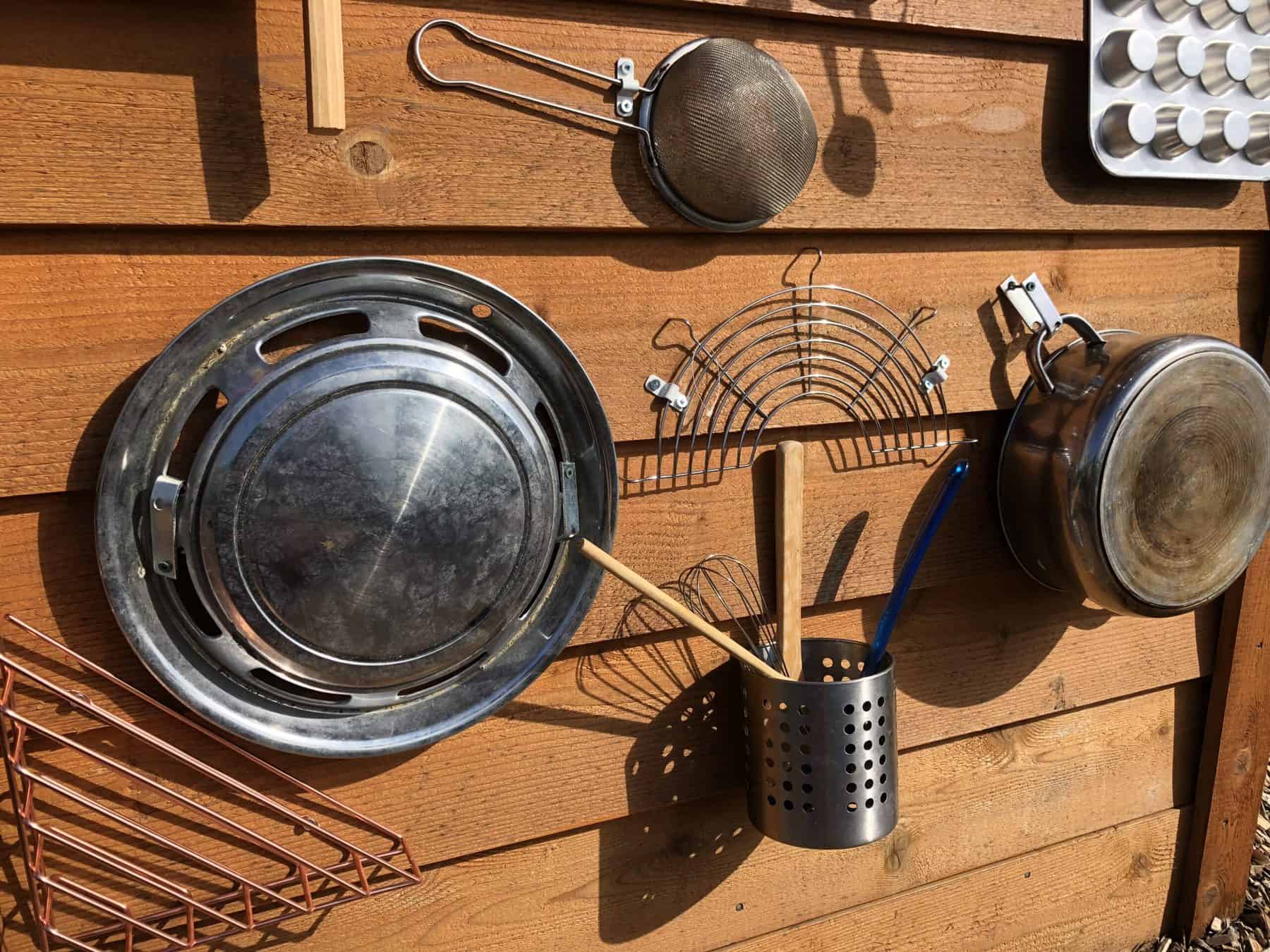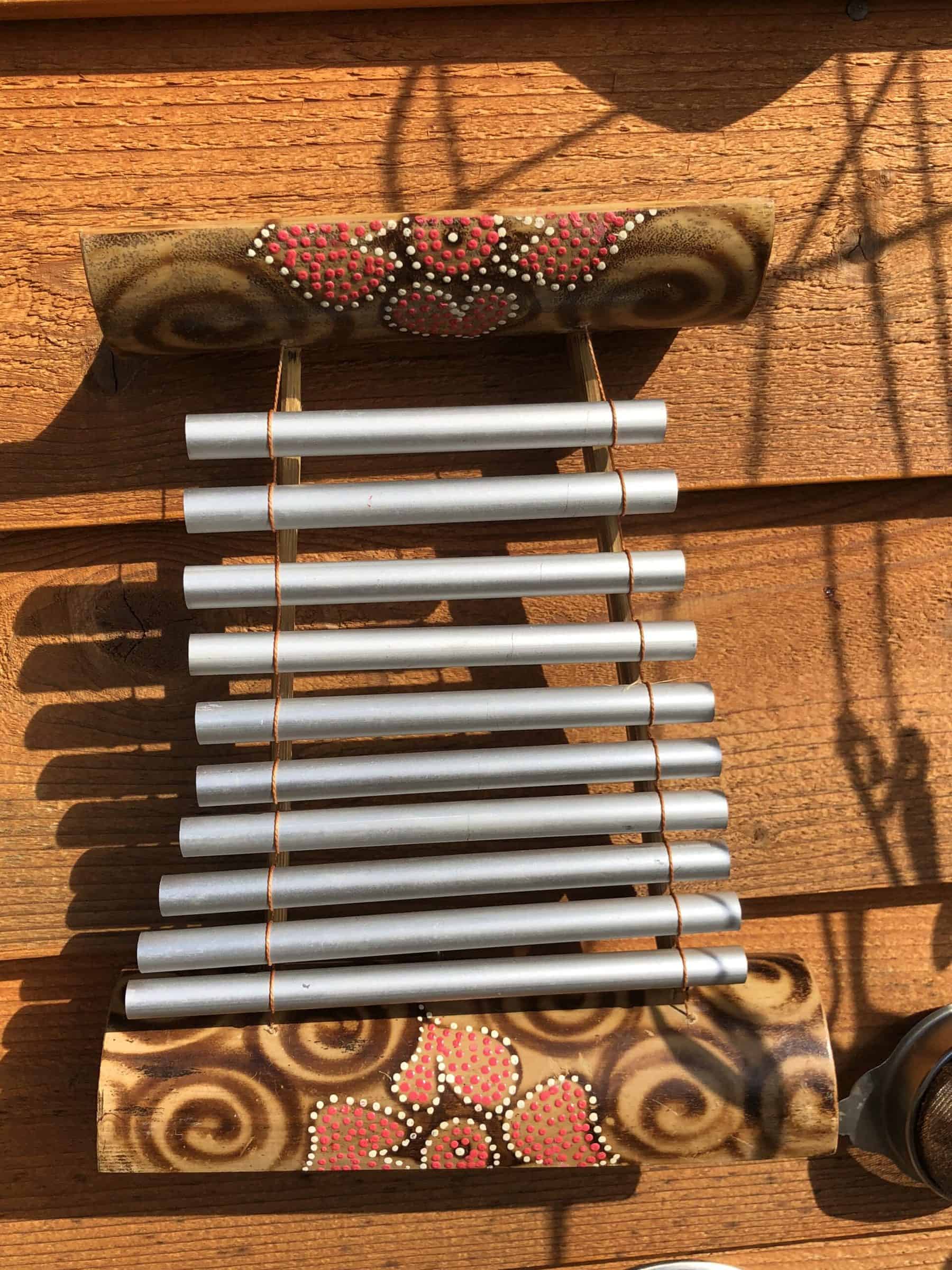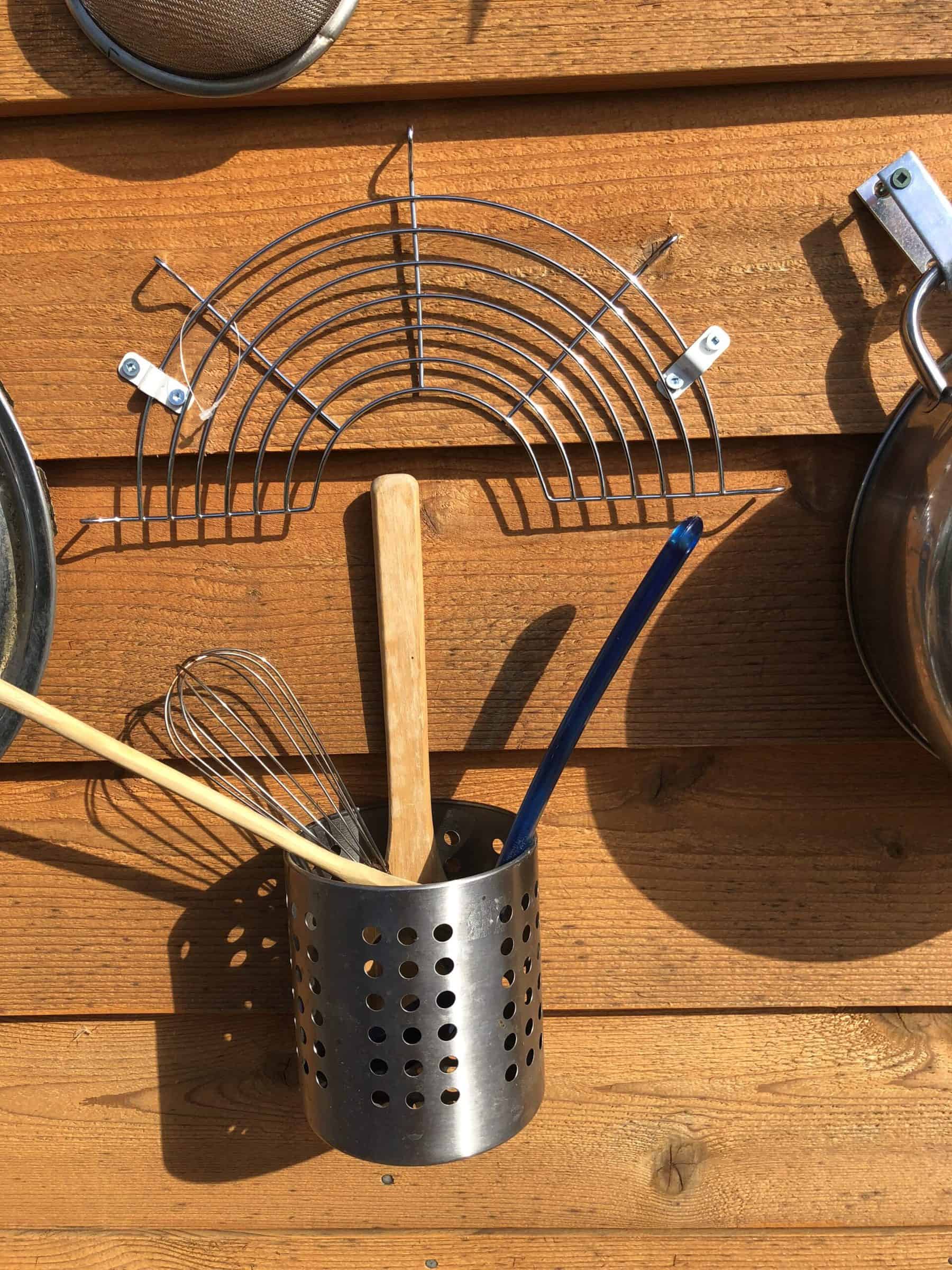- filed under: Outdoor Classroom Set Up, Playful Learning Outdoors
How to Build a Music Wall in your Outdoor Classroom
Music Is Not My Strongest Subject But…
Of all the curricular content I teach as an elementary school educator, music is likely my weakest subject area. What I don’t know about music, I make up for in my enthusiasm and expertise in outdoor play! So when a cohort of teacher candidates were looking for a project to build with our students, I was overjoyed when they took up the task of building the long neglected music wall!
Our goals for the music wall were simple: it needed to be accessible for unstructured play, and it needed to be reasonably attached to the shed to keep all the musical bits in one place. This post describes our process of how to build a music wall in your outdoor classroom.
Music Wall Building Materials
We had a small budget so the teacher candidates made use of thrift stores and up cycled or found ‘beautiful junk’ to build a collection of items for our construction.
Household Items To Use
- cutlery for wind chimes
- muffin tins
- colanders
- ‘drumsticks’ (wooden and metal spoons, whisks, potato mashers)
- hubcaps
- oven racks, broiler racks, or cooling racks
- cake or jelly moulds
- enamel crockery (mugs, bowls etc)
- stainless steel pots and pans
- plastic plumbing tubes or buckets
- tin cans or mugs
- old washboards
- up cycled cookie tins
- up cycled xylophone bits
Containing Loose Parts
It helps if you can attach some sort of container to capture the drum sticks (wooden spoon, metal spoons, whisks, potato mashers, sticks). This keeps them in one place and generally in better condition than if they find their way over to the mud kitchen! If you have symbols or other larger loose parts you might want to house them in a milk crate or other waterproof storage container nearby.
RELATED POST: HOW TO BUILD A MUD KITCHEN
Music Walls in Outdoor Classrooms
Music walls are a fun sensory experience for kids of all ages to explore how sound is made by vibrations. However, I have found they require some instruction on rhythm and beat in order to avoid becoming a chaotic NOISE wall!
Some management is required if you have a large group of children sharing the area; you’ll need to either spread the music wall out so more kids can access the beats, or establish a protocol for taking turns to avoid the frenzy of random bashing at the wall. Once established and the novelty has worn off, music walls provide endless choice and freedom to play in ways that satisfy a child’s need to move, create, and play!
The opportunities for expressive play are endless, and I’ve found the music wall requires very little maintenance over the years. I am often amazed at the dedication a group of students will display as they persist with working out a song as they search for an exact tone on the music wall!
Location
Your music wall can be located on a fence (either wooden or chain link), or on any wooden wall. Ours is located in the side of our shed.




Music walls are an easy, inexpensive and high yield addition to your outdoor classroom. They’d make a fantastic applied design and skills project (ADST) with your older students too!
If you have tips or tricks to share on how to build a music wall in your outdoor classroom, I’d love to share them! Send me a message, and I’ll add your ideas 🙂
Did you know there are a few brave teachers who have been teaching music entirely outdoors during the pandemic? Jennifer Engbrecht teaches in Winnipeg (in all that freezing cold!) and has some great tips on her social media pages and blog. You can find her blog here, and you can find her on Instagram.
More Ideas For How to Build a Music Wall
If you are looking for more ideas on how to build a music wall, check out my Pinterest board with ideas an inspiration from around the web!
